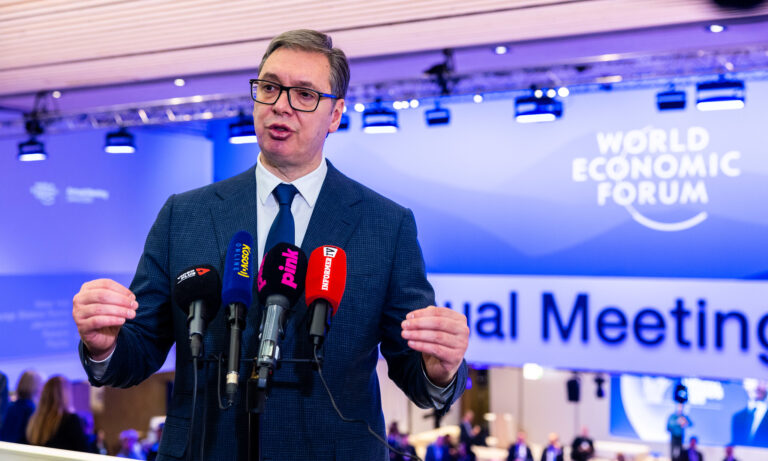After Pelješac, China and Croatia Eye a New Bridge Project

This article is the fourth in a series of articles published under the Future CHOICE initiative.
“With great joy I can say that Croatia is connected,” Croatian Prime Minister Andrej Plenković, announced. “We have achieved a goal that solves a 300-year-old problem.”
The grand achievement Plenković spoke of is the completion of the Pelješac Bridge, which connects mainland Croatia with the Pelješac peninsula and by extension the popular tourist destination of Dubrovnik. He reserved special thanks for the company that built the bridge, which – despite the pandemic – finished the project three months early: the China Road and Bridge Corporation (CRBC).
Success Story
The state-owned CRBC is China’s premier construction company and the Balkans have been a hotbed of projects for the state-owned enterprise. Still, the Pelješac Bridge marked a showcase project, both for the company and indeed Croatia as a nation. It is the first major infrastructure project completed by a Chinese company in the European Union, and, all the more remarkable, it was done almost entirely with EU funds.
In addition to the Pelješac Bridge, the CRBC is known in the immediate region for constructing Montenegro’s first highway, the Bar-Boljare Highway. Though, that project is shrouded in significantly more controversy than the Pelješac Bridge due to Montenegro’s well-publicized struggle to pay off its sizable Chinese loan.
The Pelješac Bridge has seen no such controversy. At least in Croatia, that is.
The companies that failed in their bids to construct the bridge filed a court complaint against the CRBC, alleging that the state-owned company engaged in unfair competition. They accused the CRBC of price dumping as the company undercut the competition by 20 percent, but the courts disagreed. A good deal largely funded by the EU anyway meant the complaint hardly registered in Croatia. Unlike in Hungary or Serbia, where there has been a considerable backlash against Chinese investment and influence, Croatia has seen nothing comparable.
In stark contrast, Croatian media have actually been laudatory, marveling at the speed of construction. One major newspaper wrote that Chinese workers “work like ants” even in “hellish conditions.” Another outlet mused that they work “24 hours a day.” While the positive framing of the project is largely due to the nature of Chinese involvement in a construction financed with EU funds, it still reflects a genuine Chinese success in Europe that is, by and large, becoming increasingly hostile to China.
With the bridge due to be fully operational by early 2022, along with the highway in Montenegro, the CRBC has been looking for a reason to stay in the region. Finally, it seems as if they have found one in a new project along Croatia’s scenic Dalmatian coast.
Earlier this year the Croatian Ministry of Sea, Traffic, and Infrastructure announced a feasibility study for a bridge to connect the island of Pašman, near Zadar, with mainland Croatia. In effect, the project would also connect the island of Ugljan – which is linked with Pašman via a short bridge – to the mainland. Minister Oleg Butković was explicit in connecting the new project to Pelješac, saying: “After Pelješac follows the bridge to Pašman.”
Coming to Stay
In early July, representatives of the CRBC met with the Pašman municipal head Krešimir Ćosić, with neither party hiding their excitement for potential cooperation. The CRBC was keen to point out that the bridge could be constructed relatively quickly. Considering the company finished the high-profile Pelješac Bridge project three months early despite a global pandemic, who would doubt them? The bridge would be 2017 meters long, which is comparable to the one built to Pelješac, but more favorable building conditions mean it could be built much quicker.
There are two potential versions being touted, one which would cost 400 million Kuna and the other 617 million Kuna. That is about €53 million and €82 million respectively, significantly lower than the €420 million price tag on the Pelješac Bridge. Granted, this would not be a project anywhere near the scale of the Pelješac Bridge. Nonetheless it would give the CRBC a reason to stay in the Balkans for the foreseeable future, avoiding having to ship its equipment and labor force back to China.
Ćosić has said they hope to access EU funds for the project, but if that fails, a public-private partnership would also suffice. For its part, the CRBC has also offered to help fund the project, giving the Pašman Bridge three potential sources of funding. With the support of the Croatian national government, local government figures, a major construction company, and potentially even EU coffers, the project ultimately faces few obstacles.
While some concerns have been raised, few relate to the CRBC or Chinese investment itself. As the mayor of the town of Supetar on the island of Brač has noted, “an island with a bridge is not an island.” Not only does it stop being an island, but it may become what is essentially a suburb instead. That is the fate of the island of Vir, near Zadar, which has become one of the most overpopulated islands on the Croatian coast since a bridge was built to it in the 1970s.
Bucking the Trend
As of today, there is no movement in Croatia protesting against Chinese investment or involvement in the country.
Reports from the towns around Pelješac convey only positive experiences and relationships between locals and their Chinese guests, as well as between Chinese and Croatian coworkers. There have been none of the conflicts between local and Chinese workers seen in places like Central Asia, nor has the government raised any concerns about the quality of the construction. Although the latter is something that Croatians frequently question given the longstanding stereotype of low-quality Chinese manufacturing.
“Building the Pelješac Bridge builds friendship between Croatia and China,” one of the slogans plastered on the Pelješac Bridge during its construction reads.
While rosy pronouncements such as this are typical for Chinese-led projects, they seem to be at least partly true in this case. The CRBC has received nothing but praise from Croatia’s government and a mix of curiosity and indifference from the public. It is safe to say that the Pelješac Bridge has been a strong soft power success for both the CRBC and China as a whole. With CRBC eying new projects in the country, it seems that the company came to Croatia to stay.
Written by
Luka Ivan Jukic
lijukicLuka Ivan Jukic is a freelance journalist focused on Central and Eastern Europe and wider Eurasia and a graduate student at UCL and Jagiellonian University.


